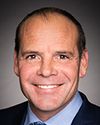First, I want to say that there is no reason, particularly, to believe that this will be an automated terminal. We don't even know who the operator will be at this point. The business seems to be going to partially automated terminals, where there are still a significant number of jobs. We indicated to the union that we in fact were prepared to guarantee a certain minimum number of jobs that would be present. I think it's far too early. This terminal, if it goes forward—which, obviously, we hope it will—won't be completed for seven or eight years, so it's a terminal that will be operated by an unknown operator a long way down the road. It's very hard to say what will be happening in the business at that point or which way they will go. It's really speculation.
Evidence of meeting #59 for Transport, Infrastructure and Communities in the 44th Parliament, 1st Session. (The original version is on Parliament’s site, as are the minutes.) The winning word was ports.
A recording is available from Parliament.




